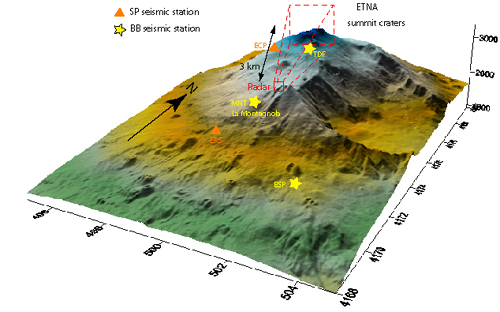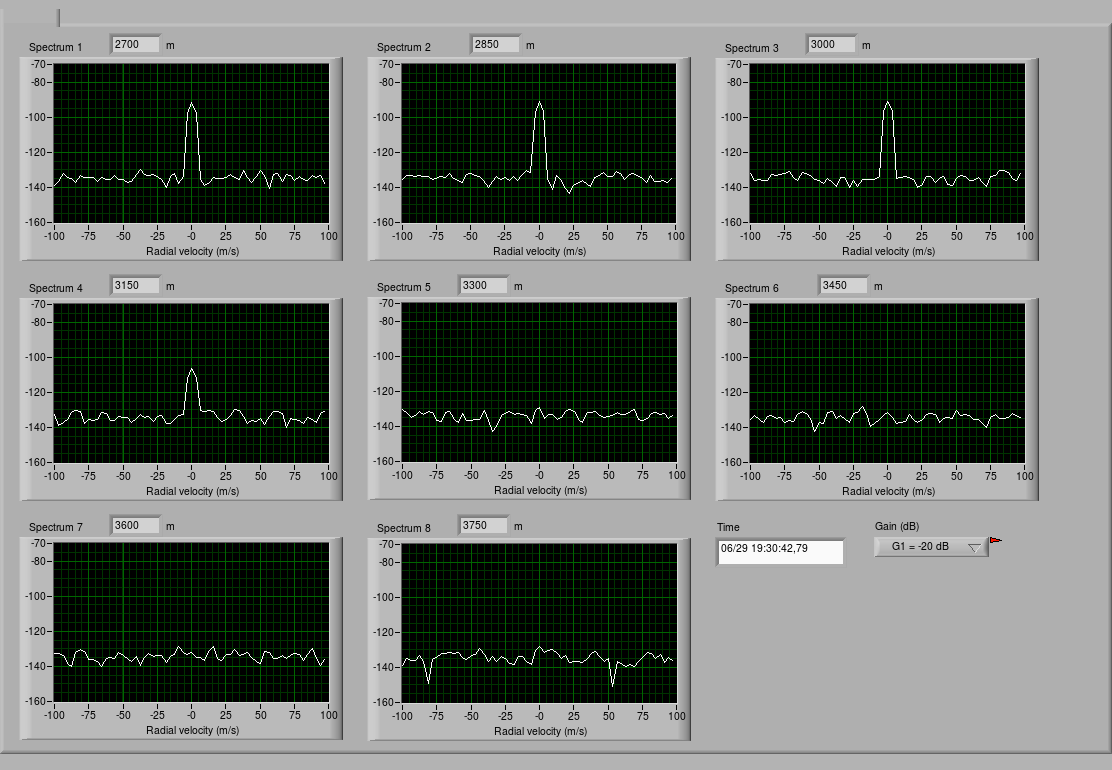Vous êtes ici : Accueil>>Surveillance Etna>>VOLDORAD 2B |
|
VOLDORAD 2B, a collaborative effort 
A volcanological Doppler radar (VOLDORAD 2B), similar to VOLDORAD, has been installed on the site of La Montagnola, about 3.5 km SSE of Etna's summit, in July 2009, in order to continuously monitor the eruptive activity of the summit craters in real-time and by all weather. VOLDORAD 2B has been designed and built at OPGC through a research contract between INGV Catania (Italy) and Université Blaise Pascal (OPGC) and a dedicated micropatch antenna was built by UNICAL (L. Boccia, G. Di Massa). Radar data are acquired jointly by the INGV Catania and OPGC in the framework of a technical and scientific collaboration agreement between INGV-CNRS-Université Blaise Pascal (OPGC). The purpose of the radar surveillance of Etna, achieved in collaboration with the INGV Catania, is twofold: (1) the mitigation of volcanic risks at Etna by better assessing the hazards arising from ash plumes and (2) the detailed study of the volcano activity and its environmental impact. Regarding hazard assessment, VOLDORAD 2B turns out to be a unique and powerful tool, providing all-weather early detection of explosive activity and real-time quantitative information on the eruption intensity, by means of near-source measurements of ejecta velocity and echo power. The integration of VOLDORAD 2B in the monitoring network of INGV on Etna and cross-correlations with signals of other sensors should bring valuable information on shallow volcanic processes and their relationships with surface activity. The correlation of maximum radar velocities to the tremor amplitude, for example, emphasizes the role of gas on the tremor generation at shallow depth at Etna (Dubosclard, Donnadieu et al., 2004; Donnadieu et al. 2005). For instance, this surveillance radar could give early warning on any shift in the evolution of the explosive activity, even at night or during poor weather, and possibly indicate early transport speed of wind-drifted ash clouds. This is an important help for decisions regarding alert bulletins, possible air traffic disruption, closure of infrastructures like the Catania international airport Fontanarossa, and actions to limit the discomfort of the inhabitants of Catania and villages surrounding Etna. Regarding the second objective, The long-term scientific collaboration between the OPGC and INGV should lead to the achievement of a database of radar signals characterizing different eruptive regimes and thus improving our knowledge of jet dynamics and of the variability of eruptive activity at Etna. Based on inversion methods we have developed (Gouhier and Donnadieu, 2008), we are willing to quantitatively estimate fluxes and total amount of gas and particles emitted by the volcano during each eruptive episode and constrain the amount of volcanic material released in the atmosphere. |




